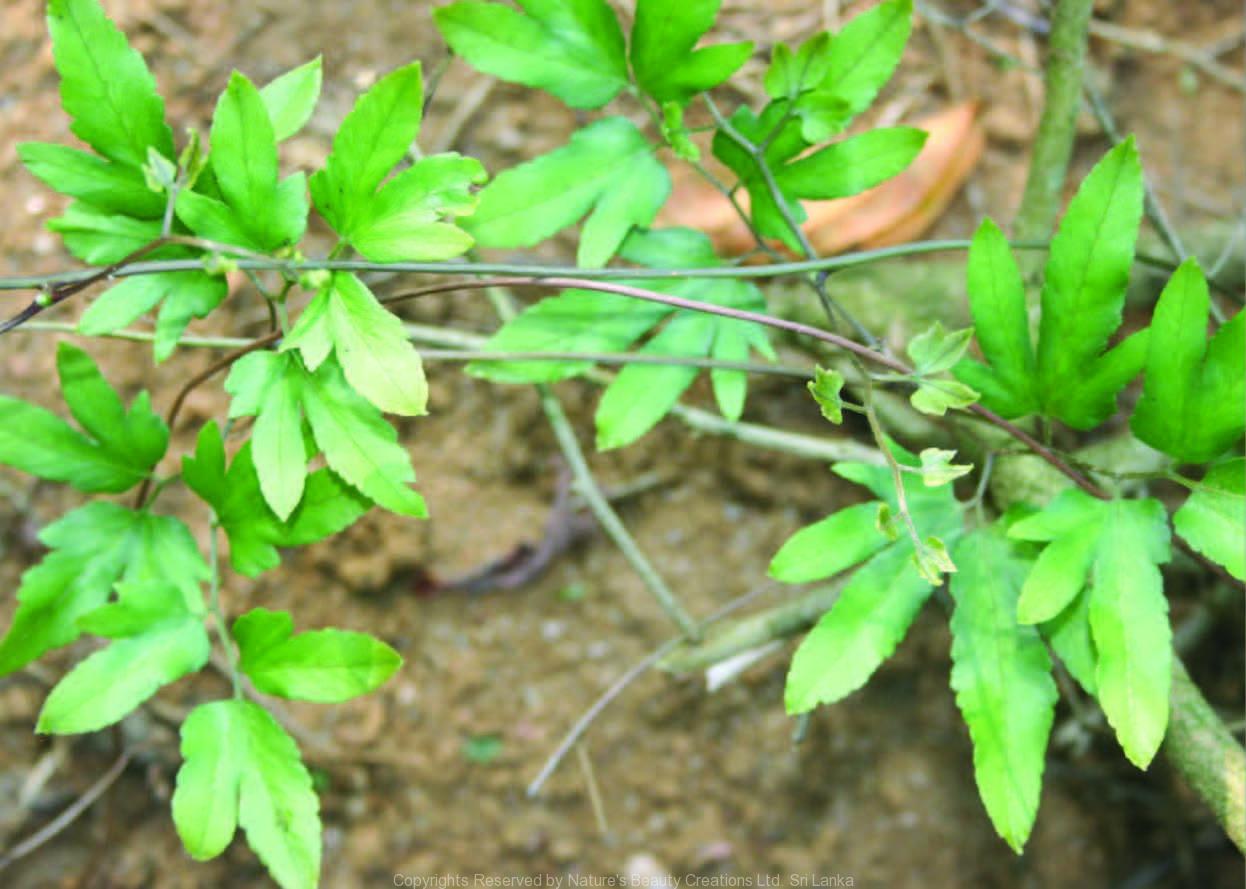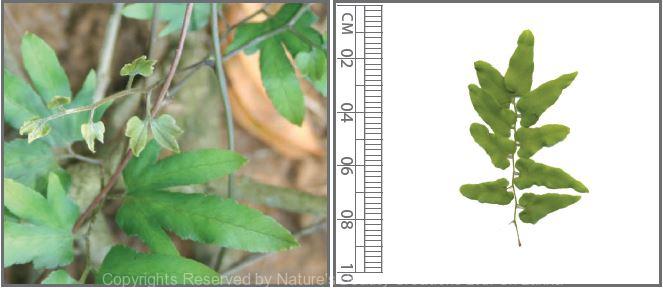

Traditional Knowledge
Useful plant parts :
Root
Uses in traditional medicine :
- Fresh root boiled in mustard oil is useful in local application for eczema
- Relieves oedema
- Used to cure wounds (e.g. wounds caused by bullets)
- An expectorant
Scientific Research
Chemical constituents:
Furopyran-phenanthrene derivative: lygodinolid, terpene: dryocrassol, anthraquinone: tectoquinone from plant
Bioactivity :
n-hexane extract of whole plant: hepatoprotective and chemopreventive; ethanolic extract of leaves: wound healng
Clinical:
References : Achari, B. et al., (1990), X-ray Crystal Structure of Lygodinolide: A Novel Spiro Furopyran Perhydrophenanthrene Derivative from Lygodium flexuosum, The Journal of Organic Chemistry, 55, 4977-4978. Chandra, P. et al., (2013), Protective effect of Lygodium flexuosum (family: Lygodiaceae) against excision, incision and dead space wounds models in experimental rats, Toxicol Ind Health. Wills, P. J. and Asha, V. V., (2006), Preventive and curative effect of Lygodium flexuosum (L.) Sw. on carbon tetrachloride induced hepatic fibrosis in rats, Journal of Ethnopharmacology, 107, 7-11. Wills, P. J. and Asha, V. V., (2009), Chemopreventive action of Lygodium flexuosum extract in human hepatoma PLC/PRF/5 and Hep 3B cells, Journal of Ethnopharmacology, 122, 294-303. Yadav, E. et al., (2012), A review on therapeutic potential of Lygodium flexuosum Linn, Pharmacogn Rev, 6(12), 107-14.
Copyrights Reserved By
Natures Beauty Creations



